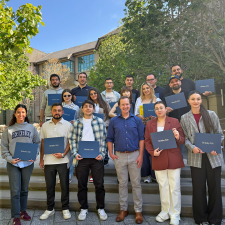Iravaban.net was this time at the Ballistic Examinations Department of the National Bureau of Expertise.
Our interviewee states that a legal specialization is desirable to become an expert in this field, because even though the expert deals with technical issues analysis, they still encounter legal questions in the course of their work.
“Each weapon has its structural characteristics, every shot fired from a weapon has its specific distance and kinetic wounding force,” he said.
The problems of forensic ballistics are divided into 4 parts: examination of firearm damages (excluding the human body), examination of handguns and their intended ammunition, comparative examination of fired bullets and cartridge cases, and restoration of erased numbers on weapons.
This department conducts examination of firearm damages: “The conclusion of a ballistic examination is very clear – either it is of a firearm nature or not, and there are very few cases when an expert is called to court, because the expert can clearly understand and provide a conclusion.”
“Crimes committed during service that the department deals with must be crimes committed with weapons – bodily injuries, murder, suicide. The expert’s conclusion is important at this stage of legal assessment because the expert can clearly distinguish the shooting distance and relative position.”
“The expert has no right to give a legal assessment, and just because a hand can reach the trigger doesn’t mean a person could commit suicide or that the shot was fired by them – the rest is subject to legal assessment. During my 15 years of expert experience, there have been rare cases when the shot was fired from a long distance, and it could not be considered suicide, it was already murder, but they are mainly performed from a close distance.”
For more details, see the video.














